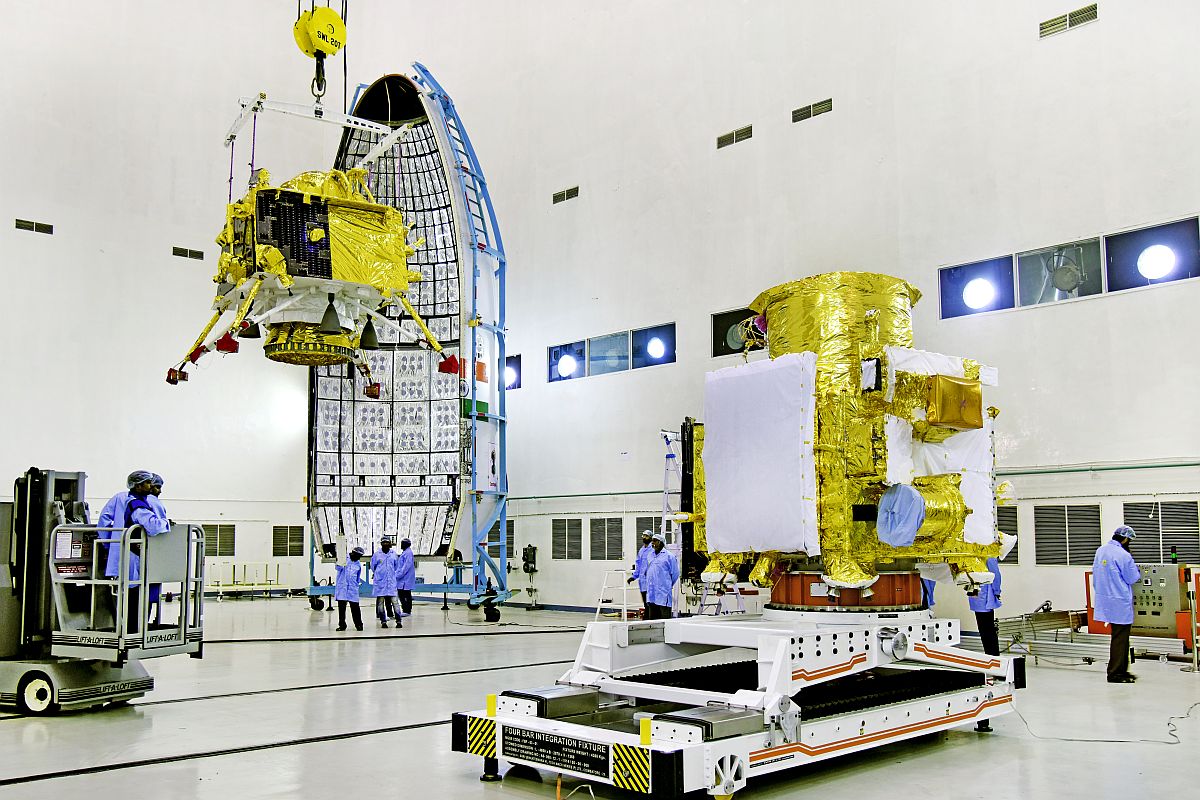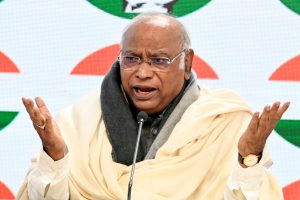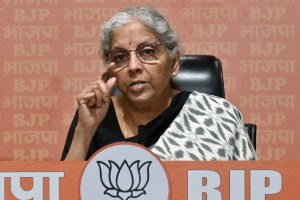The Indian Space Research Organisation (ISRO) is gearing up for the launch of Chandrayaan-2, India’s prestigious mission to the Moon, on July 15 early morning at 2 hours 51 minutes.
Speaking to media, ISRO chairman Dr K Sivan on Saturday said the Orbiter and Lander modules of Chandrayaan-2 will be carried by GSLV-MKIII. The 640-tonne rocket Geosynchronous Satellite Launch Vehicle-Mark III (GSLV-Mk III) is nicknamed the `Bahubali’, as like the hero in the successful film lifts a heavy Lingam, the rocket will carry the 3.8-tonne Chandrayaan-2 spacecraft.
After its successful launch, it will take nearly two months to go and land on the Moon’s South Pole.
A good measure of women’s power is powering India’s Rs 978 crore second moon mission with the Project Director and the Mission Director also being women.
“Nearly 30 per cent of the members working on the Chandrayaan-2 mission will be women,” K Sivan said.
The Project Director is M Vanitha, an electronics systems engineer, shouldering the entire responsibility of the Chandrayaan-2.
On the other hand, Mission Director Ritu Karidhal, a Master’s degree holder in Aerospace Engineering from the Indian Institute of Science, Bengaluru, was the Deputy Operations Director for the Mars mission.
The cost of the mission is Rs 603 crore. An additional Rs 375 crore will be incurred as launch cost.
Chandrayaan-2 is a sequel to Chandrayaan-1, India’s maiden unmanned moon mission which was announced by late Prime Minister Atal Bihari Vajpayee on the 56th Independence Day in 2003.
While announcing the moon mission, Vajpayee had said that the country was “ready to fly high in the field of science”.
The spacecraft was launched successfully on October 22, 2008, from the Satish Dhawan Space Centre (SDSC), Sriharikota. The spacecraft with an initial weight of approximately 590 kg was launched on a Polar Satellite Launch Vehicle (PSLV) C 11.
By August 2009, the orbiter started witnessing technical issues which included failure of the star sensors. And due to poor thermal shielding, the Chandrayaan-1 stopped sending radio signals on August 28, 2009. ISRO speculated that it might have crashed on the moon’s surface.
The mission was terminated abruptly after 312 days as ISRO lost contact with the spacecraft on August 29, 2009.
Eight years after it was considered lost, NASA scientists rediscovered India’s first lunar probe still orbiting the moon in 2017. The scientists found Chandrayaan-1 using a new ground-based radar technique.
According to the National Aeronautics and Space Administration (NASA), Chandrayaan-1 was the first Indian deep space mission, which was launched to orbit the moon.










